An Omnichannel Strategy Can Grow Any Business
An Omnichannel Strategy Can Grow Any Business
I’m sure you’ve heard it somewhere. Someone in your marketing department, perhaps. Maybe you keep seeing it on social media. The latest buzzword in the retail biz world: omnichannel. Sure, it sounds fresh. It seems shiny, new, and revolutionary. But what exactly does Omni-channel mean?
Here you’ll find the what, why, and how of an omnichannel retail and marketing approach, with a few easy steps to get set up.
The result: complete coverage of your customers experience from beginning to end.
What does Omnichannel mean?
An Omni-channel experience is a multi-channel approach to marketing, selling, and serving customers in a way that creates an integrated and cohesive customer experience no matter how or where a customer reaches out. The idea of omnichannel retail is to make sure that you are interacting with your customers at all touch-points, be it social media, eCommerce, or your brick and mortar store.
Ok, but does it actually work?
Yes! A Harvard Business Review study of 46,000 consumers found hard evidence that an omnichannel retail approach works.
For business owners, an omnichannel strategy provides the opportunity for a totally seamless shopping experience from brick-and-mortar stores through a variety of digital channels. Doing so not only differentiates retailers from their peers, but also gives them a competitive edge over online-only retailers by leveraging their store assets.
It’s the best of both worlds. Why keep your commerce channels in individual silos when you can make them worth with each other to leverage all touch-points of the consumer experience.
There is significant economic value to be gained from providing digital channels to traditional store shoppers, and vice-versa.
How consumers shop
At least 43% of customers have used their mobile phone while shopping in a brick-and-mortar store. That fact alone provides a glimpse into the importance of omni-channel marketing.
With an omnichannel retail strategy, you can turn this screen time into sales in your brick & mortar.
Imagine a shopper looking for an item that your website or app says is currently in stock … but it’s not. You have it in-store. That’s not a great experience.
Retail sales via digital channels (including mobile sales) increased by a whopping 23% in recent years.The majority of these dividends have gone to online merchants.
The biggest player, Amazon, is now accounting for 26% of all online retail sales.
As Amazon continues to expand aggressively into new areas of fashion and food, Amazon’s existential threat to traditional online and brick and mortar retailers looms larger than ever.
The point is, if you are not represented EVERYWHERE, your user experience and bottom line are both affected. Amazon is on the leading edge of omnichannel, and it’s no coincidence they are dominating the consumer market.
Stop sacrificing sales. Streamline your retail strategy and embrace an omnichannel retail strategy.
How Omni-channel can improve any business
There are several immediate ways that can help any business grow, be they a corporate giant or a local brick and mortar looking to expand their market share.
In-store picks-ups + returns from online orders
Simply put, the more options you provide your customers, the more likely they are to purchase.
Customers and small businesses both love the flexibility of being able to purchase online and return in-store. This leads to increased lifetime value for the customer etc.
Cross-channel promotions
Omnichannel retail offers you improved pricing incentives and the ability to provide discount offers.
For example, you can offer people a discount code on Facebook, which prompts them to come into your physical store. This catches the customer both waves, while they are online/mobile and then coercing them into physically coming into your store.
What’s more, according to Nielsen’s Total Audience Report, Americans spend an average of 10 hours and 39 minutes a day in front of a screen.
If people are online that much, use that to get them into your physical location.
Plus, when people on in-store they are still shopping on their phone! This is a key point to remember. Shoppers are checking prices, doing side-by-side comparisons of products, reading reviews on those products, and even consulting their social media apps before buying.
Real Time Inventory and availability control
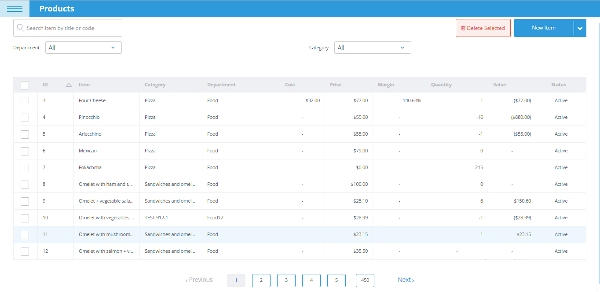
Omnichannel retail strategy allows for more in depth inventory reporting
With eHopper POS you are able to sync your inventory between your physical location and eCommerce efforts. You can see what’s happening at all levels at all times.
When someone buys from your POS, your stock online adjusts, nothing is ever sold that isn’t there, and you’ll never miss a sale because something was there that you thought was not.
Innovative pick-up solutions
Allow people to get things immediately, instead of waiting days or weeks for traditional shipping.
This means offering your customers the most convenience possible. They can purchase your product while on their phone or tablet, in traffic, in the back seat of the car, and then pick up on the way home from work or dinner. They are assured that the item is in stock and are able to lock it down immediately online. Then they are able to pick it up that same day, hour, etc.
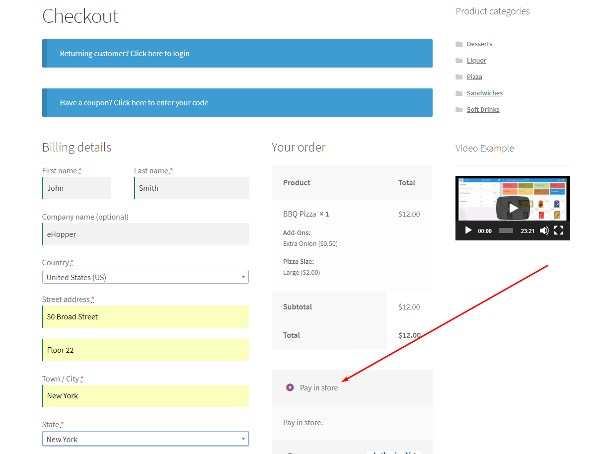
Omnichannel retail strategy allows the flexibility of ordering online and picking up in-store.
It’s the best of both worlds, combining the online experience with brick and mortar shopping. This is the ideal customer journey.
Big Data – more metrics on shopping behavior
“Without big data analytics, companies are blind and deaf, wandering out onto the Web like deer on a freeway.” – Geoffrey Moore, Author of Crossing the Chasm & Inside the Tornado
The data on your customers, the better you can customize their unique experience. If you are integrating an omni-channel strategy then you are tracking your customer at all parts of their journey.
As you aggregate more and more information on your customers and their spending habits, you are amassing valuable data for future targeted marketing promotions.
Measure everything!
How do I Develop an Omni-Channel Strategy?
Great, so you’re convinced to mesh your traditional brick and mortar, eCommerce, and social media approach to an omnichannel strategy…now what?
Don’t fret, there are some clear next steps. There are powerful tools at the disposal of any small business that will enable you to create your strategy.
Research where your customers already are. Walk in their shoes.
Always take a lap in the customer’s shoes. The most successful businesses are always thinking about the user experience and the areas were you could improve or any areas where there might be gaps in your marketing approach.
The first step to establishing your omni-channel strategy is to find out where your customers already are! In order to combine and leverage every place your customers see and interact with your products, you have be aware of where they are first.
The easiest way most small businesses achieve this is with analytic tools which measure visitor behavior on web sites. The most common analytics tool, and free for any business, small or large, is Google Analytics.
With Google Analytics you’ll be able to see what your most popular content is, how people find that content, and how long they engage with that content. This is invaluable information for any retailer or small business.
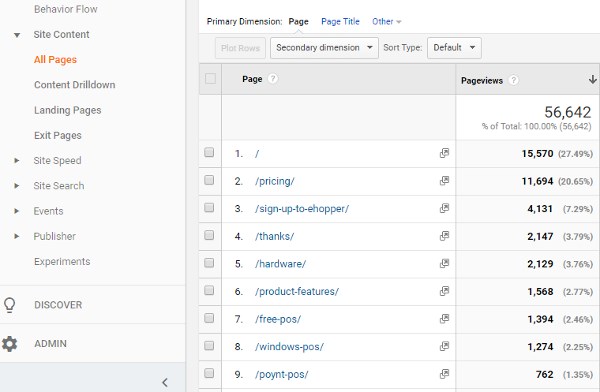
Use data in Google Analytics to determine your Omnichannel strategy
When thinking about your customers, ask yourself:
- When and where have they previously interacted with our businesses?
- What issues or concerns did they have?
- Have they contacted another department in your organization? What was discussed?
- Their personal information: what are their interests? what shops do they visit?
Make every touch-point shoppable
The core of a successful omnichannel retail strategy is leveraging every touch-point between you and your customers. From social media, to online advertisement, to your physical location, all point of your business should be “shoppable,” making it as simple as possible to purchase your products.
Integrate with social media
Consumers are now using social media in all of the different buying stages: when they research products or services, when they make the decision to buy and on the backside of that, when they reach out for any customer service issues.
According to the Pew Research Center, 68% of Americans use Facebook. What’s more, around three-quarters of the platform’s U.S. users (74%) say they visit the site on a daily basis. This makes social media an incredible valuable part of an omnichannel approach.
There are many powerful tools available to manage your social media, as an individual or across a team. You need to create a structure to listen to your audience, track their behavior, and additionally, respond to questions or custom service concerns in real-time.
The real benefit of integrated social media is that it allows you to create a highly specific, customized consumer experience. This personal feel is an important benefit of your omnichannel strategy.
Remarketing
Remarketing, also known as retargeting, is a form of online advertising that can help you keep your brand in front of bounced traffic when they leave your site. For most websites, only 2% of web traffic converts on the first visit. Remarketing is a tool designed to help companies capture that other 98% and represents a fundamental piece of developing an omnichannel strategy.
Think it sounds complicated? It’s not at all!
It works like this: you place a small, unobtrusive piece of code on your website (often called a pixel). This pixel, is unnoticeable to your site visitors and won’t affect your site’s performance. But once in place, whenever a new user visits your site, the pixel drops an anonymous browser “cookie.”
Later, when your cookied visitors browse the Web, the cookie will let your retargeting provider know when to serve ads. This means your ads are served to only to people who have previously visited your site, reaching them at another touch-point in their shopping path.
Link your Youtube channel to your eCommerce store.
A YouTube channel can be a powerful way to increase sales for any size business. Almost 5 billion videos are watched on YouTube each day. Yet, only 9 percent of small businesses in the U.S. utilize this platform. That’s a huge gap in an omni-channel marketing approach.
eHopper Omnichannel
Ehopper’s all-in-one business solution is a great way to start setting up an omnichannel strategy.
With eHopper, you can seamlessly sync your point of sale with your online store and eCommerce efforts! This means getting all the benefits of an integrated omnichannel approach.
Integrate today! Try eHopper’s complete POS solution for FREE

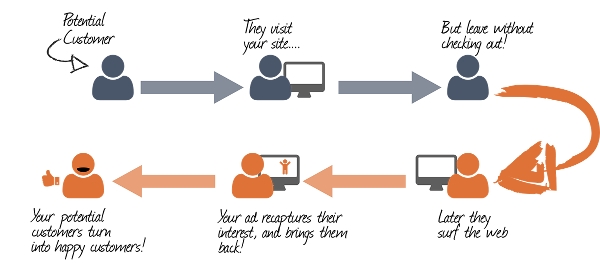



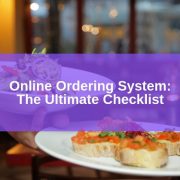

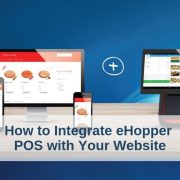


Hi eHopper!
Is there any difference between omnichannel and multichannel retail?
Hi Don,
Thank you for your question. Although these terms are often used interchangeably, they have different meanings. Multichannel retailers sell their products using different channels but they are not integrated. For example, you may have physical and online stores with the same brand but different stocks and pricing. Omichannel retailers provide seamless customer experience across all touch-points.